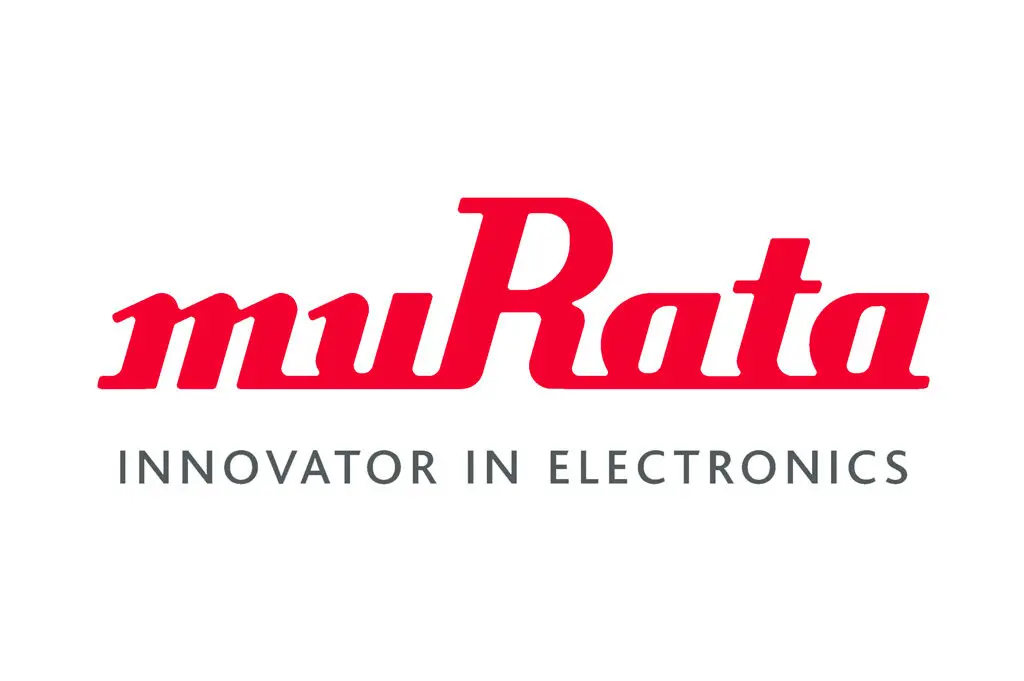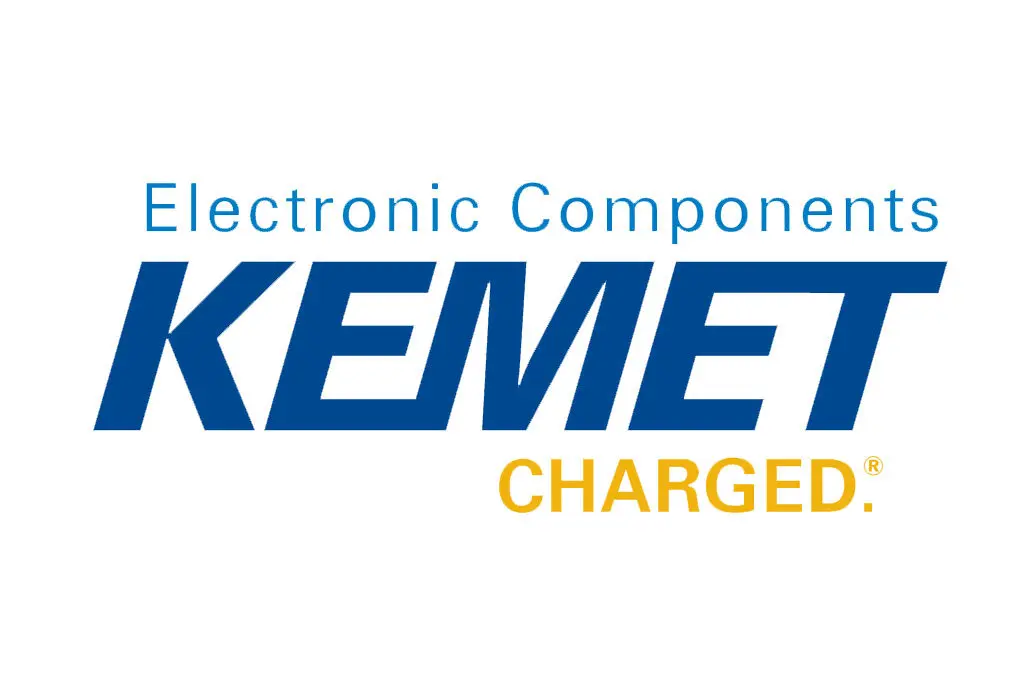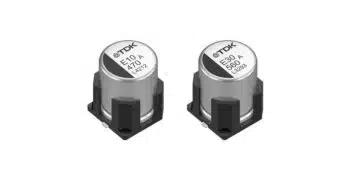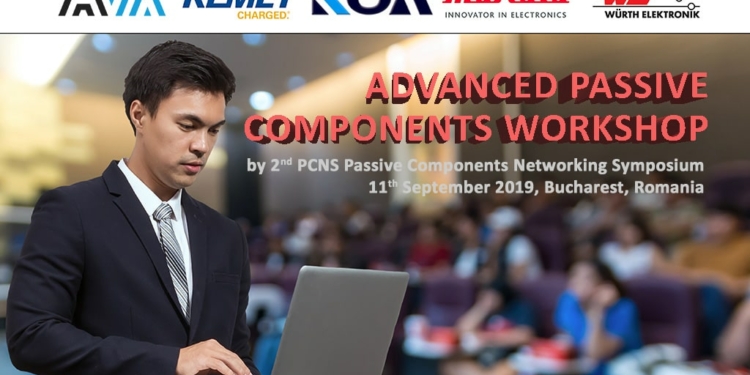Source: EPCI
Leading passive components manufacturers will discuss their hot products, application notes and latest technology during the Advanced Passive Components Workshop as part of the upcoming 2nd PCNS Passive Components Networking Symposium on 11th September 2019 in Bucharest, Romania.
Attendees to the next 2nd PCNS Symposium will get a unique chance to meet experts from leading passive manufacturers AVX, Kemet, KOA Europe, Murata and Wuerth Elektronik and discuss the hot topics during a four-hour workshop dedicated to latest passive components and its applications.
PCNS is an international bi-annual networking symposium dedicated purely to passive components hosted by a European university. The 2nd PCNS venue will be held on September 10-13th 2019 in Bucharest, Romania hosted by a local Politehnica Universsity of Bucharest. More information and registration please see: www.passive-components.eu/pcns.
Advanced Passive Component Workshop Topics
September 11th 2019, at PCNS, Bucharest, Romania
Workshop Part 1, 13:00-13:40
Title: How to choose the best efficient Inductor for a DC/DC converter and consider EMI
Lecturer: Lorandt Fölkel M.Eng
Company: Würth Elektronik eiSos GmbH & CO.KG
Short description:
We live in our world surrounded with lot of electronic devices which use switched mode power supplies (SMPS). The request to those power switchers is high efficiency and low EMI and this is wanted today from all designers. To achieve high efficiency the need for low losses are the major focus for design engineers.
- How to calculate the right storage inductors and choose the right parts is not trivial.
- How to calculate all the real losses in the storage inductor
- How the shielded VS. unshielded inductor influence the EMC
- To reach best EMI, the experience with right filter choke will be needed.
With few simple analog filters is possible to achieve this request if take in consideration few rules. In our session we will examine from different point of view the SMPS and consider multiple filtering methods to find out which is the most suitable and effective to our needs. After the theoretical aspects and calculation we will use in a practical demonstration the results and get some other applications results where the effectivity of used filtering get measured step by step until implementation to final design. Even does not exist a universal solution for all designs, we will consider few SMPS examples and the right solution for each situation.
Outline of the presentation:
- Compare different core Materials for inductors
- Benefit of shielded VS unshielded inductors
- Calculate the storage inductor for best efficiency
- Application examples for different converter designs
- EMC consideration of based different inductors
Workshop Part 2 13:40 – 14:20
Title: Power Resistors Space Saving and Shunt Resistors Technical Note
Lecturer: Mrs. Yeoeun Kim
Company: KOA Europe GmbH
Topic 1: Space saving by high power resistors
As the requirement for higher performance in the restricted space is increasing, recent studies have led to better options for miniaturizing high-power components in high-temperature conditions. Recently, derating guidelines based on the resistor’s terminal temperature was introduced also for flat chips. The primary goal of this theme is to understand what engineers should consider when there is a need for downsizing. In this Seminar following topics will be addressed:
- How to use the derating curve based on the terminal part temperature
- Overview of chip size vs power rating
- Anti-pulse, anti-surge resistor
- Pulse endurance comparison
- Wide terminal resistor
- Thermal shock and heat generation comparison
Topic 2: Shunt Technical Notes
Current measurement by a current sensing resistor is done using the relationship that the voltage difference across the resistor is proportional to the amount of current passing through it. In the high frequency range, however, parasitic inductance effects should be considered on measurement error. In this theme, KOA addresses how to minimize the measurement error on using current sensing resistors. Following topics will be addressed:
- Influence of parasitic inductance
- Usage guide of voltage measurement
- Parallel mounting of current sensing resistors
Workshop Part 3 14:20 – 15:00 
Title: Choke Coils, Ferrite Beads and 3-Terminal Ceramic Capacitors
Company: Murata Europe GmbH
Topic 1: Introduction of Common Mode Choke Coils
New applications in consumer, automotive and industry more can more bus systems (Ethernet, CAN, USB, etc.) are used to distribute data between the ECU inside the application or to transport data to external devices. Increasing data rates make a more efficient use of EMI filter components necessary with distortion of the desired signal. How to efficiently decide which part will be used for which application and why is the content of the presentation. In this presentation we will touch following topics:
- Basic Function
- Construction / Different ways of Construction
- Variants existing
- Function in Application
- Most Used Application (Bus systems)
- Advantages
Topic 2: Introduction of Ferrite Beads
The use of electronic equipment is creasing every day and the use of wireless data transmission as well. To be able to let all equipment still work without disturbance the Regulations of EMI are getting stronger and stronger. The product most commonly used to supplies EMI (right behind capacitors and resistors) are the Ferrite Beads. Even Ferrite Beads are in number the third most use component after capacitors and resistors, people do not know much about their function and behaviour. How to efficiently decide which part will be used for which application and why is the content of the presentation. In this presentation we will touch following topics:
- Basic Function
- Construction / Different ways of Construction
- Variants existing
- Key Parameters
- Function in Application as EMI Noise Filter
- Specific Applications in electronic circuits
Topic 3: Introduction of 3- Terminal- Ceramic Capacitor
The use of electronic equipment is creasing every day and clock rate of Processors and Switching-Power-Supplies is increasing. To be able to let all equipment still work without disturbance the suppression of ripples to achieve a stable DC-Voltage becomes more and more important. 3- Terminal-Capacitors can provide a much better noise suppression than normal MLCCs and can reduce significantly the component count per device if applies in the right way. In this presentation we will touch following topics:
- Basic Function
- Construction
- Variants existing
- Key Parameters
- Function in Application as EMI Noise Filter
- Improved noise reduction compared to normal capacitors
- Reduction of component count and size reduction
Workshop Part 4. 15:30 – 16:10 
TITLE: Super Capacitors and effective protection against ESD and Surges with Multilayer Varistors
Lecturer: Ussama Margieh
Company: AVX Corporation
Topic 1: Supercapacitors
The use of Super Capacitors in industry is vastly growing for an array of power related applications ranging from power hold up, energy harvesting, peak pulse current, and battery supplement or replacement applications. Over the course of the next five years, the market for Super Capacitors, or otherwise known as electric double-layer capacitors, is expected to more than double in value. From the manufacturer perspective big efforts are done in order to achieve new levels of reliability, temperature performance, increased working voltages, and lower ESR which will allow the usage of the Super capacitors in a wider range of applications. Outline of the discussion:
- Technology and construction of double-layer capacitors
- Differences to conventional capacitors and batteries (Pros and Cons)
- Design Guidelines for the correct selection of a suitable capacitor for the application
- Hints for the calculation of Expected Life Time
- Application examples, challenges and solutions for emerging applications
Topic 2: Effective protection against ESD and Surges with Multilayer Varistors
The increasing use of electronics in various fields, like in automotive, medical or industry, requires reliable protection against surges that could damage the electronics as well EMI / RFI attenuation to avoid signal distortion and meet regulatory requirements. Protection of electrical circuits against over voltages is usually an integral part of the specifications at the development stage. The most common technologies used for circuit protection are suppressor diodes and Mulilayer Varistors in SMT. Outline of the discussion:
- Construction of Multilayer Varistors (MLV)
- Technology and Performance comparison between MLVs and TVS-Diodes
- Design hints, options and recommendations
- Protection of high speed data lines
- Application examples in the field of Automotive and industrial sector
- New Product Developments
Workshop Part 5.: 16:10 – 16:50
Title: Tantalum capacitors for high reliability and how ceramic capacitors can address commercialization of space future needs
Company: Kemet Electronics Corporation
Topic 1: Tantalum Capacitors: High Reliability Product Hierarchy and New Advance Products
Lecturer: Ed Jones
Mission Critical Applications in the Aerospace and Defense Industry have been challenged with the increase in the number of satellites, improvements in technology to support the war fighter and pressure for improved reliability, smaller size, and cost reduction. Usage of automotive grade and standard COTS products have been heavily discussed during the last years. KEMET has introduced establish reliability MnO2 and Polymer Tantalum technology several years ago and during this presentation we will touch following topics:
- Existing Ta Polymer and MnO2 Portfolio
- Reliability Hierarchy and Reposition of COTS nomenclature
- Key Tantalum MnO2 and Polymer benefits
- New Advance Products under development (Construction, Spectrum Offering and New key benefits
Topic 2: Commercialization of Space: Industry Trends, Component Selection, and how Ceramic Capacitors from KEMET can address these future needs
Lecturer: Wilson Hayworth
The rapidly evolving trend in the space industry continues to adopt a commercial model where miniaturization, cost, and shorter life expectancy are driving design decisions to material grades deemed unacceptable just a few years ago. While there are many benefits to adopting these changes, the community needs a clearer understanding of product grades that aligns with the expectations for each application.The nature of this industry does not readily share application requirements that allows the supply base to participate in these decisions.
- Industry Trends
- Choosing the correct ceramic grade
- What is the real definition of COTS
- The future – The introduction of Hi Rel Alternatives
- Benefits of using Established and Hi Reliability Mil Spec products































